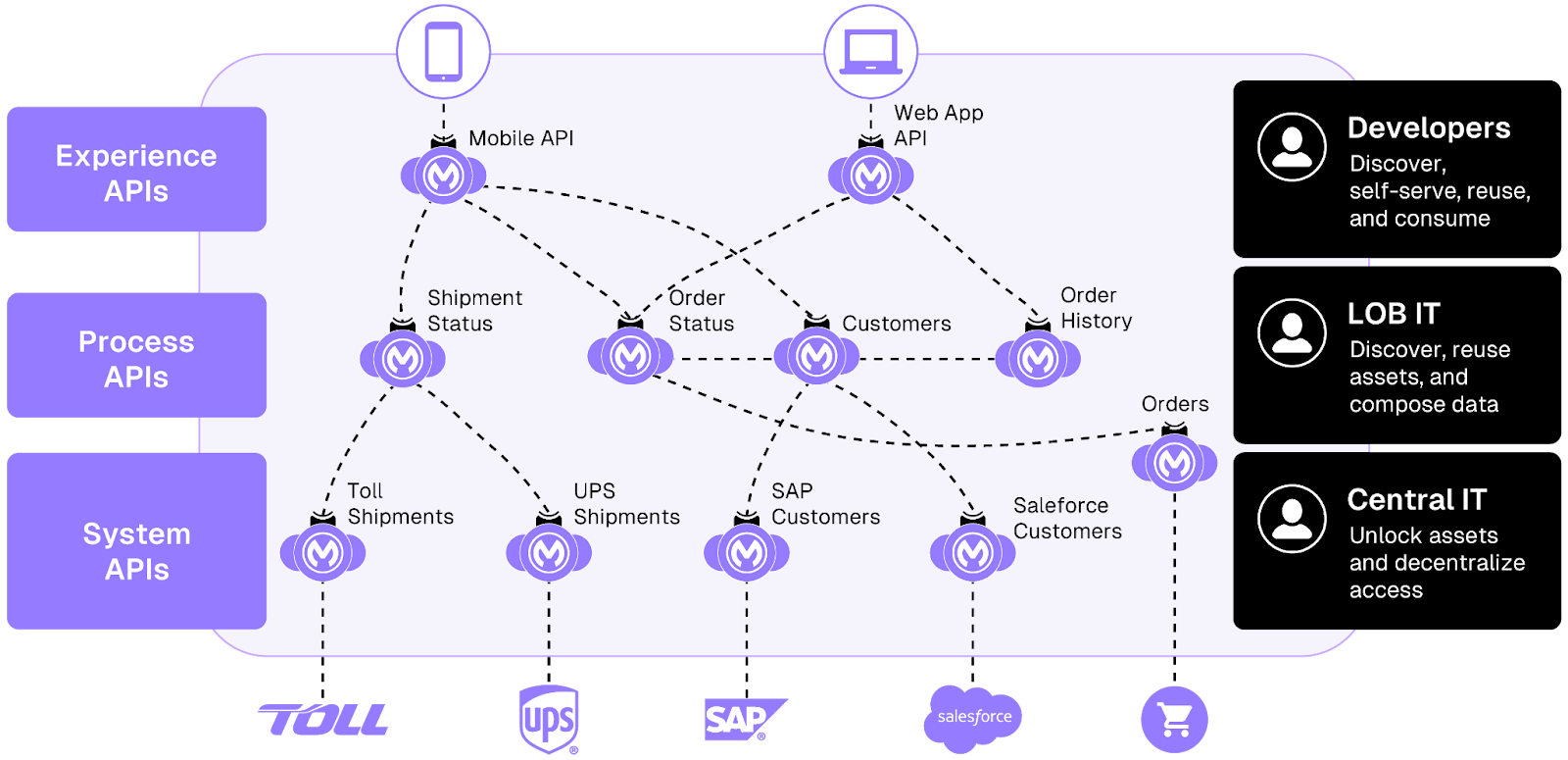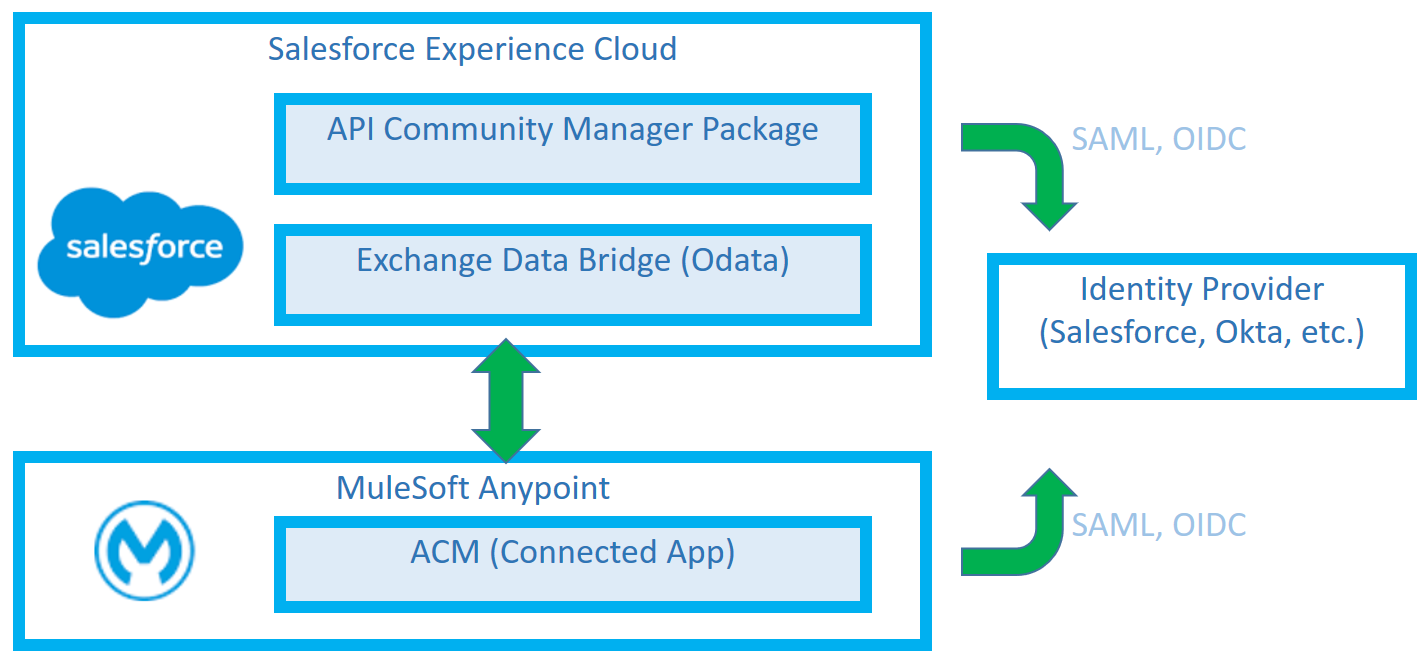Businesses rely on APIs (application programming interfaces) and SaaS (Software-as-a-Service) for even the simplest of functions. To increase their efficiency, many use software that integrates and automates on-premises software, SaaS, and other platforms. MuleSoft is one such name on which companies such as mentioned above rely upon. To understand what MuleSoft is and how to become MuleSoft developer?, keep reading this blog. We are going to take one step at a time to understand this software better.
What is MuleSoft?
MuleSoft is a Salesforce company. It offers a myriad of tools to build integrations and automations for different enterprise use cases. Its integration and automation tool is named Anypoint Platform. This platform aids companies to seamlessly connect devices, applications, and data throughout their cloud computing and on-premises environments.
Salesforce acquired MuleSoft in 2018. Thus, all its solutions and products are under Salesforce now.
MuleSoft and Anypoint Platform Explained
MuleSoft facilitates businesses to make integrations and automations via various enterprise solutions. Organizations use these solutions to integrate an application or a system from the inside-out. Hundreds of pre-built accelerators, templates, and connectors are used to connect data from different platforms and heighten its value.
Anypoint Platform is MuleSoft’s one of the most popular offerings.
Enterprises can do various things with this platform. Here are a few of them-
- Streamline complex business processes
- Automate projects with code or clicks to accelerate development while saving time
- Bring forward the value of well-integrated systems and real-time data
Development teams can utilize the Anypoint Platform for uncovering APIs built anywhere through their own CI/CD pipelines. Alternatively, they can also build APIs from scratch.
APIs and other reusable assets aid in speeding up time-to-market, minimizing rework, and increasing enterprise agility.
Components of Anypoint Platform-
Anypoint Platform by MuleSoft consists of these tools and components.
Anypoint Connectors
These are pre-built connectors to help in building integration with clicks rather than codes.
Anypoint DataGraph
This tool facilitates reusing API in a single request as well as unify APIs into a single data service without the need to write more code.
Anypoint Code Builder
This is an integration and API development tool to deploy, develop, and design APIs from one environment.
API Design
This is a graphical, web-based tool that aids in quickly building and documenting reliable, standardized, and quality APIs.
MUnit
It is a native-testing framework that is used to perform integration testing and unit testing for Mule apps and APIs.
What Does A MuleSoft Developer Do?
The primary job of a MuleSoft Developer is to aid their customers with the process of digital transformation. They achieve this by designing and connecting APIs that further facilitate multiple applications to communicate with each other.
As the demand for fast data exchange grows due to exceeding digitization, companies will start needing better solutions such as IoT and AI. And that is where software like MuleSoft comes into the picture.
MuleSoft Developer Job Duties
As a MuleSoft Certified developer, you will be responsible for carrying out various job duties. Here are some of those-
- Communication project status and details to team members, stakeholders, and managers.
- Testing applications post development to ensure intended outcome.
- Reviewing project scope. Creating time and cost estimates for project completion.
- Creating prototypes of new solutions based on user feedback and business needs.
- Developing new functionality and features for an application based on directions by the company or client.
- Create and maintain documentation related to software development procedures and processes for future projects.
- Reviewing existing codes to make improvements or suggest solutions to problems.
- Staying updated with emerging technologies around their field.
- Reviewing user interface (UI) designs and giving feedback on their ease of understanding.
- Communicating clearly with clients regarding both requirements and feedback.
You May Also Read – Become Certified MuleSoft Platform Architect
How To Become A MuleSoft Certified Developer?
Becoming a MuleSoft certified developer will help you further your career. While you already have certifications and a good working experience, this certificate will act as an additional star in your quest to a great future.
To be able to crack this exam with the right Mulesoft course, you will need to fulfill the below-mentioned criteria
MuleSoft Developer Qualification & Experience
Here are a few things to keep in mind regarding qualifications and experience –
- You must have a Mule 3 and Mule 4 Developer certification.
- Have basic understanding of Java and cloud hub Dashboard Management.
- Knowledge of tools like Maven, confluence, Go CD, Jenkins, Jira, Bamboo, etc.
- Working understanding of Scripting Common Services, connectors, templates, DevOps development – all of which are within Mule 4 guiding source control and installation.
- Expert level experience with Data Weave, Element Handling, REST web service, SOAP, RAML, cloud hub, and M Units.
- Have real-time experience on Mule 4 at AnyPoint Platform.
- Relevant experience in applying API driving architecture using Mule 4 and Mule 4.3.X.
Programming Knowledge
If you wish to clear this exam, you will need experience in programming, especially in object-oriented languages such as Java or C++.
If you are a developer-in-training, it will be helpful to have a basic understanding of data formats like CSV, JSON, and XML as well as integration technologies like SOAP, REST, JMS, and HTTP.
An Understanding of the Software – MuleSoft Training + Tutorials
Becoming a MuleSoft developer means passing an exam, which in turn means that you will have to get a good understanding of this software.
In order to gain knowledge of all sorts, you need to dive deep. But that does not require you to leave everything. You can simply choose to dig the internet for everything available on this software. Tutorials and self-study can give you almost all the knowledge essential to help you clear this exam.
If you want to go the extra mile and ace this exam, then your best bet is Mulesoft online training. It is best to pick an institute that caters to your needs and expectations. Going with one that has seasoned trainers will be a plus. Having trainers who will guide you through all the latest trends will boost your confidence further.
Read Also– Top 5 In-Demand IT Certification Courses You Must Consider
MuleSoft Certifications-
You can prepare for any Mulesoft certification that matches your interests and profile. Following are the most popular Mulesoft certifications-
1. DEVELOPER
MuleSoft Certified Integration Associate
Duration: 1 hour 30 minutes
This certification will validate your knowledge of core integration and API-led concepts and connectivity terminology.
MuleSoft Certified Developer – Level 1
Duration: 2 hours
This certification will validate your working capabilities on basic Mule 4 projects to manage, test, build, and deploy integrations and APIs.
MuleSoft Certified Developer – Level 2
Duration: 2 hours
This certification will validate your skills at implementing production-ready Mule integrations in a DevOps environment.
MuleSoft Certified Hyperautomation Specialist
Duration: 2 hours
This certification will validate your skills at developing hyperautomation solutions for all MuleSoft and Salesforce products.
2. ARCHITECT
MuleSoft Certified Catalyst Specialist
Duration: 1 hour 30 minutes
This certification validates your knowledge at using MuleSoft Catalyst principles during delivery engagements for achieving business outcomes.
MuleSoft Certified Platform Architect – Level 1
Duration: 2 hours
This certification validates your knowledge to lead Anypoint Platform strategy to aid in building an application network by employing API-led connectivity.
MuleSoft Certified Integration Architect – Level 1
Duration: 2 hours
This certification validates your skill to lead Anypoint Platform implementations to oversee operationalization and quality of solutions.
Conclusion How To Become Mulesoft Developer
“According to research from the Bureau of Labor Statistics, computer and IT jobs are expected to grow much faster than average from 2023 to 2033, with a projected 356,700 job openings annually.”
Now that you know what MuleSoft is, what a developer with this certification does, and how to start your journey as a professional, there is only one thing left to do and that is to get going.
Start by polishing your skills and getting ahead of all the prerequisites with the right MuleSoft training. Once you are there, passing the exam will not seem difficult anymore. It is a good career with a lot of potential in the future, especially now that MuleSoft comes under Salesforce.
FAQs How To Become Mulesoft Developer
Q1. What is the average salary after MuleSoft Developer Training in India?
Ans. The average salary after MuleSoft Developer training in India is around ₹ 5.5 LPA. What you actually get paid depends further on many factors.
Q2. Do I need coding knowledge for MulesSoft?
Ans. You only need minimal coding knowledge for this software. While coding is required to perform data transformation, Anypoint Platform’s components are dragged-and-dropped for the actual implementation.
Q3. Is it difficult to become a MuleSoft certified developer?
Ans. Becoming a certified developer in MuleSoft is not the hardest task you will have to achieve. But it does require you to stay focused, study well, get a good grasp on the topics, and gain hands-on experience.
Q4. How long will it take to learn MuleSoft?
Ans. If you are familiar with the fundamentals, it should ideally take you somewhere between two to four weeks.
Q5. Is MuleSoft a good career choice?
Ans. Once you get certified as a developer in this software, you can move towards MuleSoft Architect certification.
Source: https://www.igmguru.com/blog/how-to-become-mulesoft-developer



